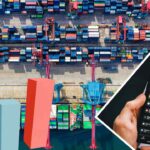Once hailed as a symbol of India’s booming startup ecosystem, Ola has found itself in a whirlwind of challenges. The dramatic rise and steep fall of Ola Electric Fall after IPO. From battery fires to regulatory scrutiny and plummeting sales, here’s how India’s EV pioneer lost its spark.
The company is backed by heavyweight investors like SoftBank (Japan), Tiger Global (U.S.), and Temasek (Singapore), Ola seemed unstoppable. Its EV arm, Ola Electric, even pulled off one of India’s biggest IPOs in 2024, raising nearly $734 million.
But that soaring momentum has come with some serious turbulence.
Ola Electric Fall after IPO
Since going public, Ola Electric has seen its market value nosedive—shedding nearly 70% in just seven months. The company’s flashy marketing and rapid rollout haven’t been enough to compete with India’s more established two-wheeler manufacturers.
Ola Electric Fall after IPO, Sales of Ola’s scooters have plummeted to less than half of what they were in April 2023. Sales are down, and losses are up.
In the last quarter of 2023, the company reported a $65 million loss, a sharp jump from $43.6 million during the same period the year before.
“Re-Engineered for India”? Maybe Not Fully
Ola’s flagship EV was heavily inspired by Etergo’s AppScooter, the product it acquired in 2020. Former employees allege that the Indian version was launched with minimal modifications. One ex-staffer in the compliance department told the BBC that internal deadlines were unrealistic and safety clearances were rushed.
Ola, in response, pointed to a 2023 blog post asserting the scooter had been fully re-engineered and tested for Indian road conditions. However, mounting evidence from real-world use paints a more complicated picture.
Service Woes and Lack of Dealer Support
One of Ola’s boldest moves was skipping the traditional dealership network and opting for direct-to-consumer sales. It looked innovative at first—until things went south.
When problems started cropping up, many customers had nowhere to turn. Ola had few service centers, and online support often went unanswered for days. India’s Central Consumer Protection Authority said it received over 10,000 complaints about Ola scooters in just one year.
In response, Aggarwal promised to open nearly 4,000 service outlets. While Ola says most complaints have been resolved, many of these new centers are now under investigation in several states for operating without proper licenses.
Cracks in the Business Model
According to former employees, Ola rushed its product launches—sometimes pushing vehicles to market before all the engineering and compliance checks were done. Their first electric scooter was based heavily on the design from Etergo, a Dutch startup Ola acquired in 2020. Some insiders say very few modifications were made before launch.
Ola, for its part, insists that the vehicle was thoroughly re-engineered and tested for Indian roads. In a blog post from October 2023, the company detailed its process: digital simulations, component testing, and field trials. But with real-world issues piling up, customers remain skeptical.
Gigafactory Delays and Investor Concerns
Ola also promised to build a 20-gigawatt EV battery plant, one of India’s largest. The project was supposed to reduce dependence on imports and give the company a major edge. However, Reuters reported that the gigafactory has missed deadlines and may face penalties under government agreements.
The Indian government had offered dual subsidies, one for manufacturing electric scooters and another for setting up the battery plant. But delays on both fronts are beginning to worry investors, especially those who bought into the company during the IPO at inflated valuations.
Read also: India and the U.S. Are Talking Trade
Start-up Culture vs. Manufacturing Reality
Many experts believe Ola Electric Fall after IPO, a software startup mindset applied to hardware manufacturing. Hardware takes time, rigorous testing, and robust systems. You can’t patch a scooter like you patch an app.
“Ola’s biggest issue is trying to operate like a tech startup while building a physical product,” said Deepesh Rathore, a former product strategist at Ola Electric. “Deadlines are often unrealistic, decisions are top-down, and pivots are constant.”









